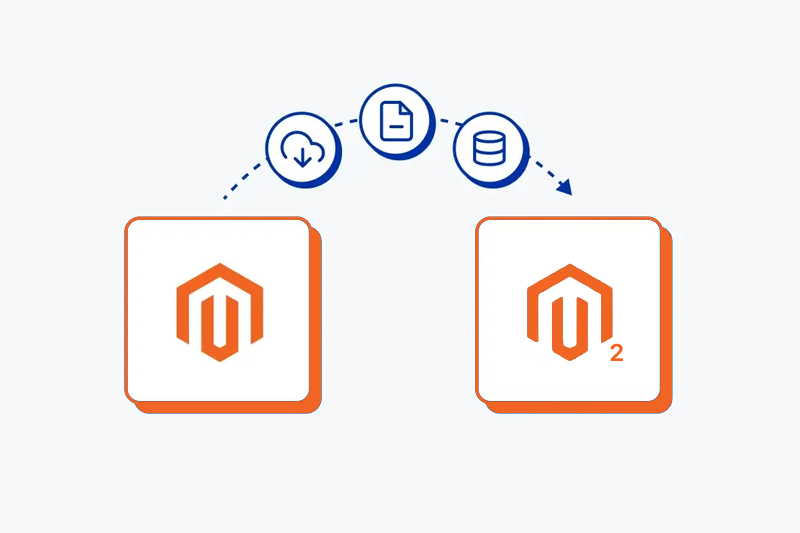
Magento 2 Multi-Store & Multi-Language Configuration: Best Practices for Global eCommerce
by Rahul Basu
August 11,2025
In today’s interconnected world, eCommerce businesses rarely stop at serving a single market. Whether you’re expanding from one country to five or selling across multiple continents, Magento 2 offers robust features to support a multi-store and multi-language setup that empowers brands to reach customers in their own language, currency, and preferred shopping experience.
However, configuring and managing Magento 2 for global operations isn’t just a matter of turning on a setting — it requires strategic planning, technical know-how, and ongoing optimization. That’s where partnering with a professional Magento agency or Magento 2 agency can help ensure your setup is scalable, secure, and profitable.
This blog dives into the best practices for setting up and managing Magento 2 multi-store and multi-language configurations for global eCommerce success.
Why Multi-Store & Multi-Language Support Matters in Global eCommerce
Global customers expect more than just access to your products — they expect a personalized shopping experience. This includes:- Localized languages (e.g., French for France, Spanish for Spain and Latin America)
- Local currencies with accurate exchange rates
- Localized tax rules and shipping options
- Cultural relevance in content and product presentation
Key benefits of Magento 2 multi-store setups:
- Centralized management for all stores
- Easy scalability for entering new markets
- Unified reporting across multiple regions
- Reduced operational complexity compared to running separate websites
Understanding Magento 2’s Multi-Store Architecture
Magento 2 uses a three-tiered hierarchy for store management:- Website – The top-level container that manages payment methods, shipping, and tax settings.
- Store – A subdivision of the website, allowing you to have different product catalogues.
- Store View – The language and presentation layer of a store. This is where multi-language capabilities come into play.
Best Practices for Magento 2 Multi-Store Configuration
-
Define Your Global Expansion Strategy First
- Will each region have its own product catalog?
- Do pricing and promotions differ by market?
- Are shipping carriers the same across regions?
-
Use Separate Websites for Major Market Differences
- Website 1 – Europe
- Website 2 – North America
- Website 3 – Asia-Pacific
-
Optimize Store Views for Language Variations
- Display a fully translated product catalog
- Use locale-specific date, time, and currency formatting
- Deliver region-specific promotional content
-
Implement a Robust Translation Workflow
- Integrate with translation management systems (TMS)
- Use Magento CSV export/import for bulk translation updates
- Work with native translators for high-conversion copy
-
Use Magento’s Price Scope Setting Wisely
- Global pricing works best when prices are the same worldwide.
- Per website pricing is essential if you need to adjust for currency, shipping costs, or local taxes.
-
Centralize Inventory with Multi-Source Inventory (MSI)
- Avoiding overselling by tracking inventory per store view
- Assigning sources (warehouses) to specific websites or regions
- Automating order routing to the nearest fulfilment centre
-
Maintain Consistent Branding with Flexible Design
- Use a parent theme for global brand elements
- Create child themes for localized variations (colours, banners, etc.)
-
Optimize Performance for Global Audiences
- Use a Content Delivery Network (CDN) for global asset distribution
- Enable full-page caching with Varnish
- Host on scalable infrastructure like AWS or Azure with regional data centres
-
Ensure SEO Best Practices Across Stores
- Using hreflang tags for language targeting
- Setting unique meta titles and descriptions per store view
- Ensuring clean, localized URLs
- Implementing proper canonical tags
-
Invest in Continuous Maintenance & Analytics
- Store-specific KPIs (conversion rate, AOV, bounce rate)
- Language-specific performance
- Cart abandonment patterns per region
- Design the optimal multi-store hierarchy for your markets
- Implement translations, currencies, and tax rules correctly
- Ensure performance scalability with CDN, caching, and server tuning
- Maintain consistent branding while supporting localization
- Integrate third-party tools like ERPs, CRMs, and payment gateways for each region
Case Study: Magento 2 Multi-Language Fashion Retailer
A European fashion retailer partnered with a Magento 2 agency to expand into Asia and North America. Their goals:- Offer region-specific currencies and payment methods
- Translate the store into 6 languages
- Centralize inventory management while fulfilling locally
- Separate websites for EU, NA, and APAC
- Store views for English, French, Spanish, Japanese, and Chinese
- Per-website pricing and tax settings
- Integration with DHL, FedEx, and local couriers
- CDN setup for global page load optimization
Results in 6 months:
- 40% increase in international sales
- 22% faster load times for APAC visitors
- Higher conversion rates in local-language store views




